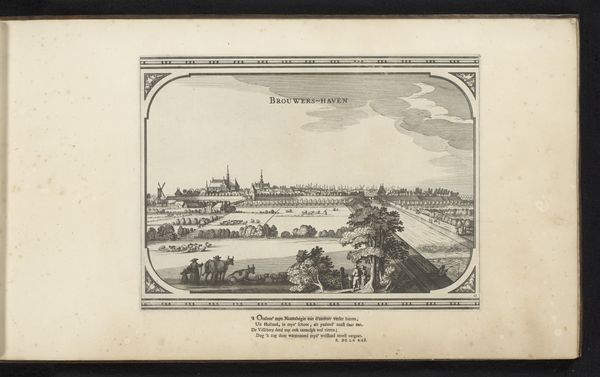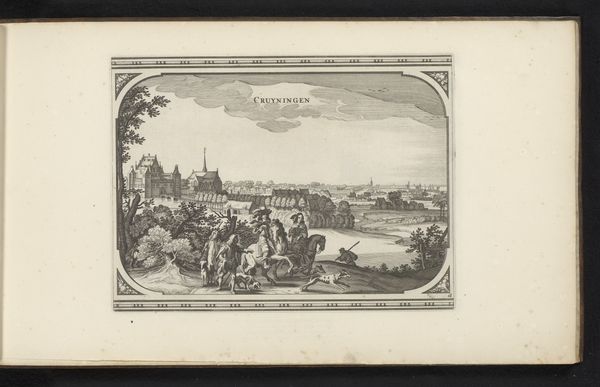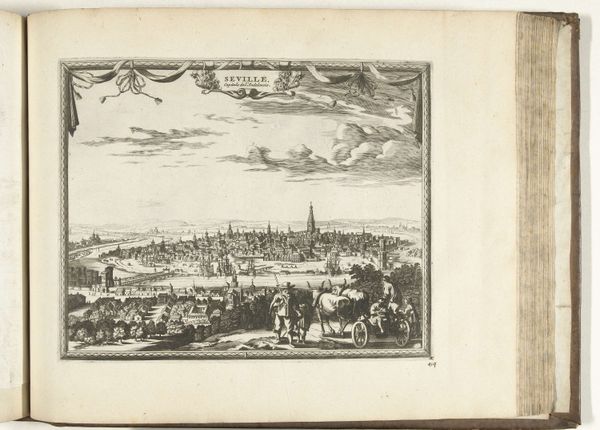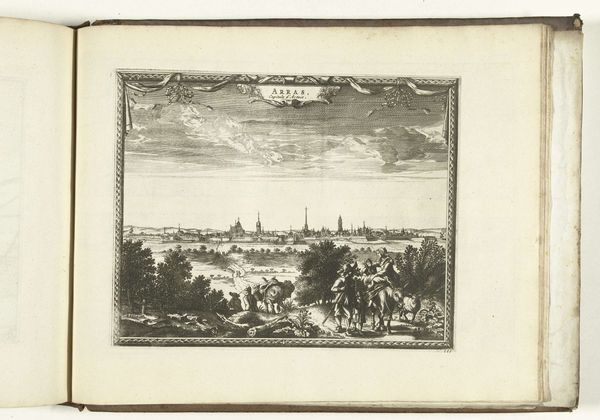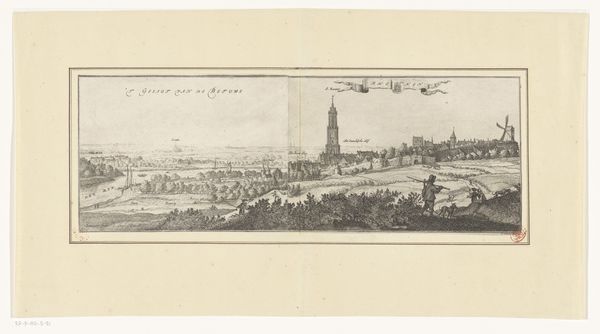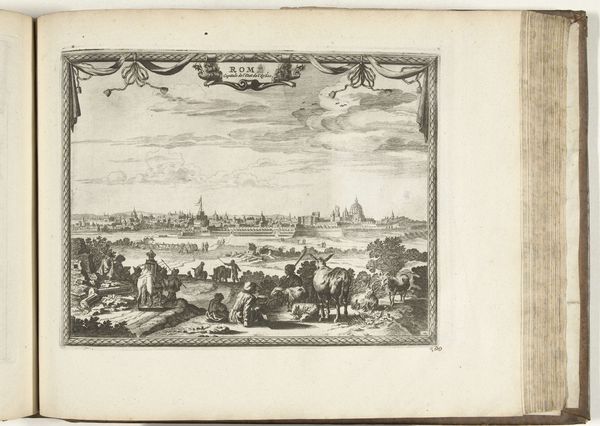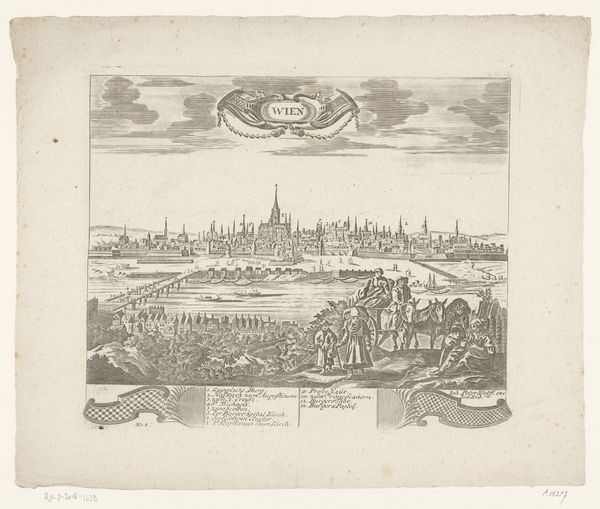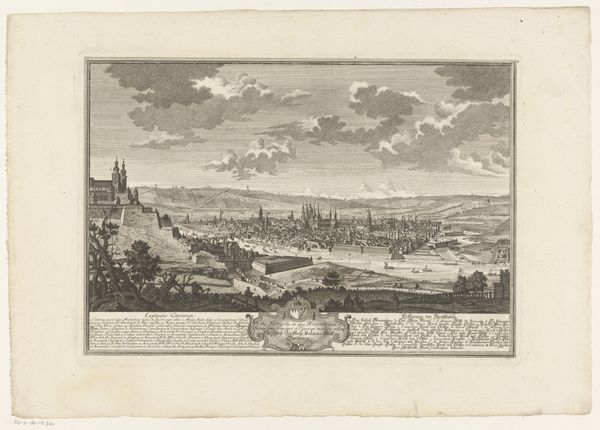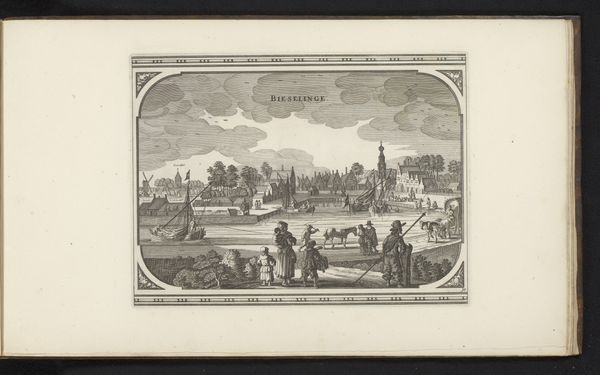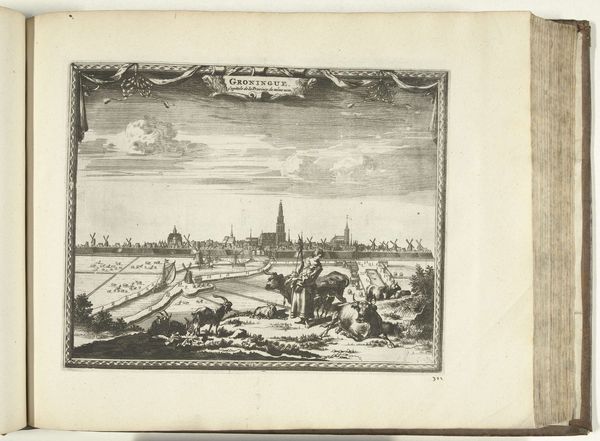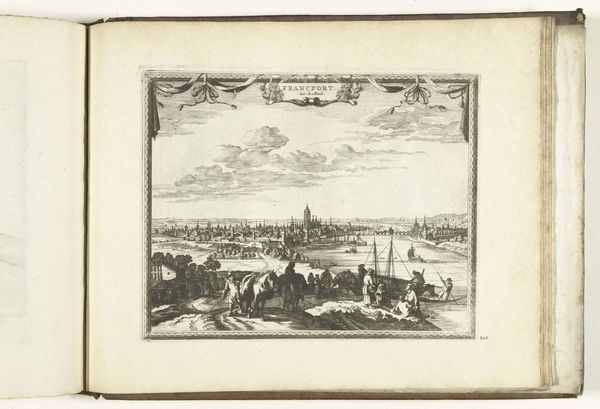
drawing, print, paper, ink, engraving
#
drawing
#
aged paper
#
toned paper
#
pen drawing
#
dutch-golden-age
#
ink paper printed
#
parchment
# print
#
old engraving style
#
landscape
#
paper
#
ink
#
pen-ink sketch
#
pen and pencil
#
pen work
#
cityscape
#
engraving
#
pencil art
Dimensions: height 211 mm, width 280 mm
Copyright: Rijks Museum: Open Domain
Editor: This is "View of Vlissingen from the Land Side," a pen and ink drawing by Pieter Hendricksz. Schut, created around 1662. It's really delicate. It depicts the city skyline with tiny, detailed buildings and figures. There's a strong division between the foreground pastoral scene and the distant urban landscape. How do you interpret this work? Curator: The divide isn't just visual; it's symbolic. Consider Vlissingen's role in the Dutch Golden Age. It was a crucial port city, deeply connected to maritime trade, including the, uh, more troubling aspects like the transatlantic slave trade. So, what does it mean to present this industry and global commerce from such a pastoral, almost naive perspective? The people seem disconnected from what this city enables, doesn’t it? Editor: I hadn’t thought of it that way. So the idyllic scene in the foreground is juxtaposed against the city's involvement in these global power dynamics? Is it a commentary? Curator: Precisely! The artist, intentionally or not, highlights the way the Dutch constructed their identity, perhaps obscuring the exploitative realities of their wealth. The city itself is literally at a distance. Notice the people relaxing with their livestock, seemingly unaware of the intense political and economic activity over yonder. Doesn't this romanticized version erase the labor and oppression upon which the city, and arguably, this drawing, was made possible? Editor: It does, actually. Seeing it through that lens completely changes my understanding. I initially saw it as a simple landscape, but now I recognize the complex social commentary it seems to hold. Curator: Exactly! By acknowledging the context, we expose not only the artwork's intent but also the historical biases that shaped its creation and reception. I am left thinking about labor, class, and more.
Comments
No comments
Be the first to comment and join the conversation on the ultimate creative platform.
